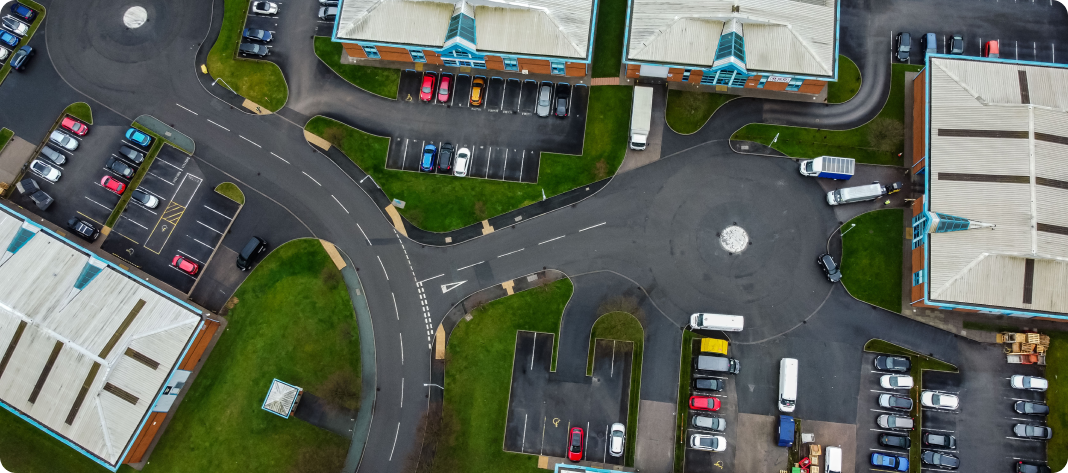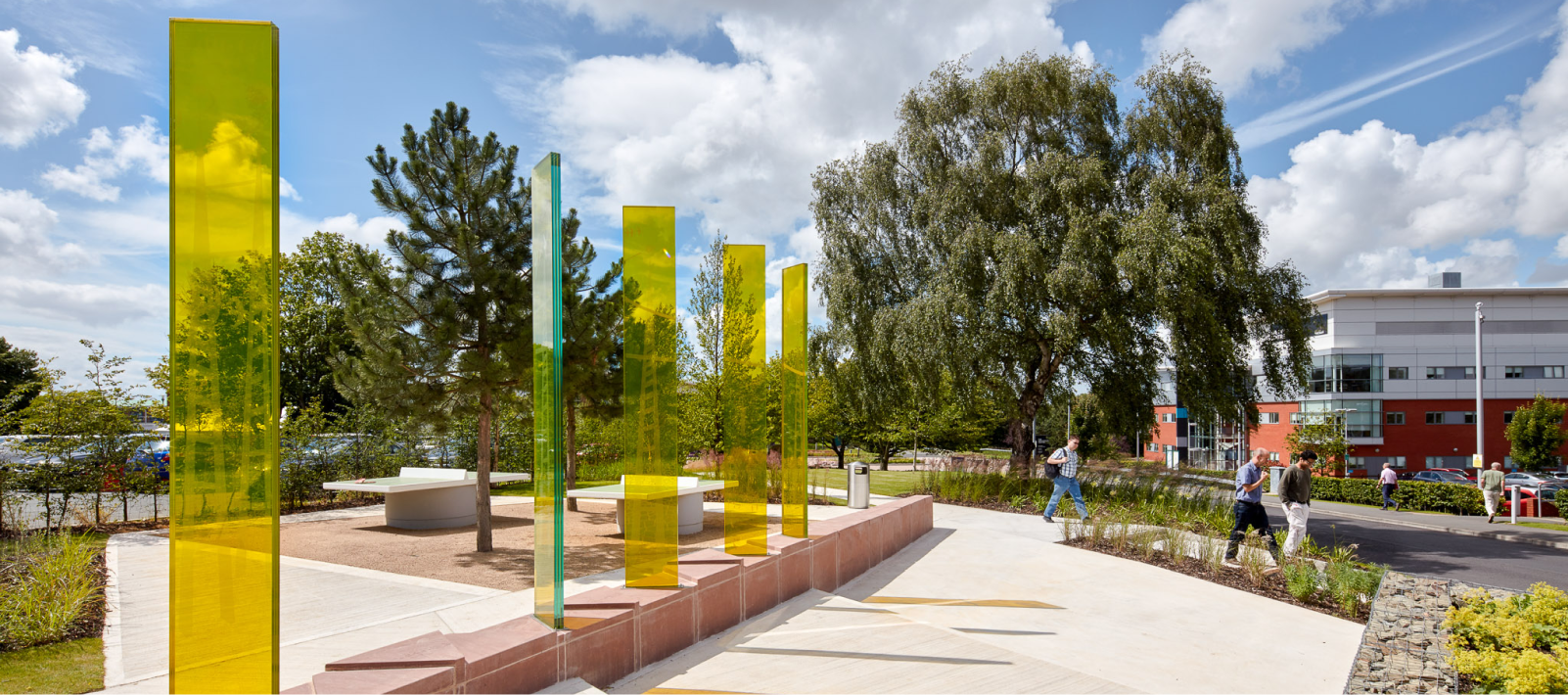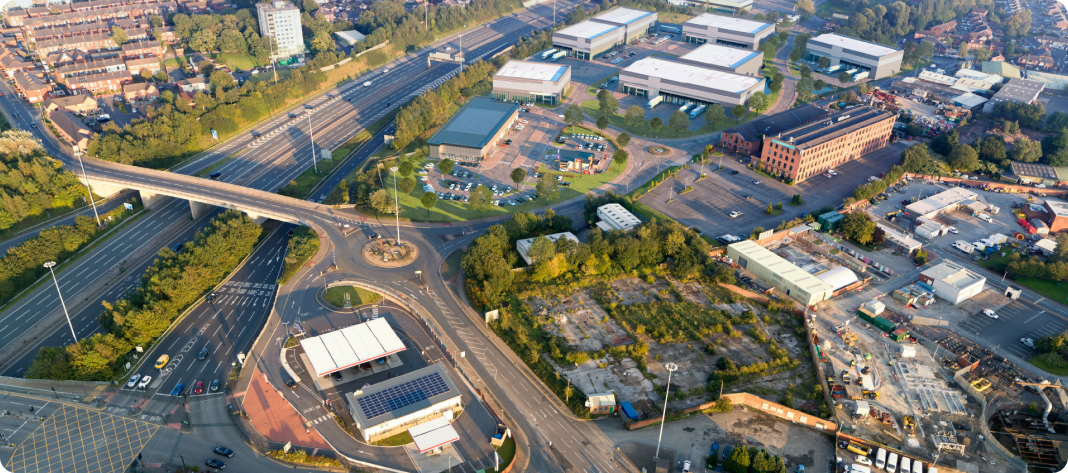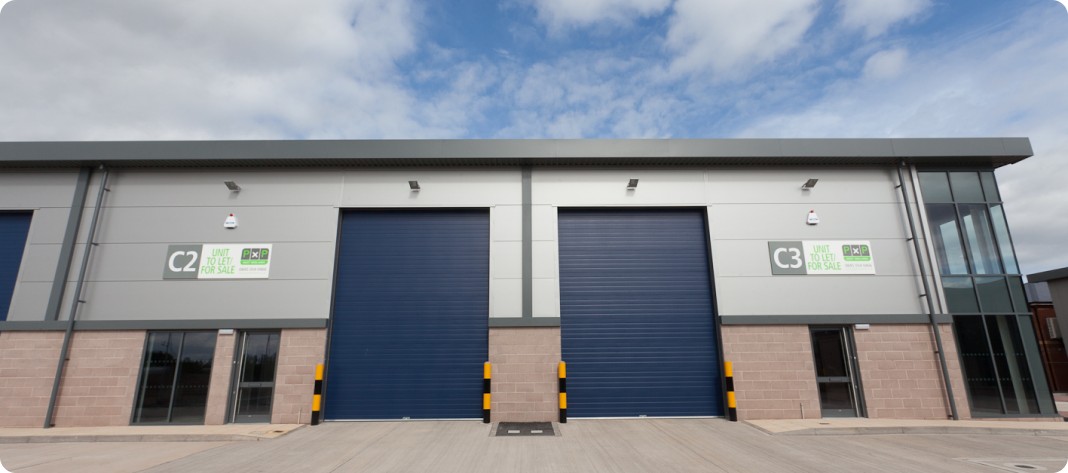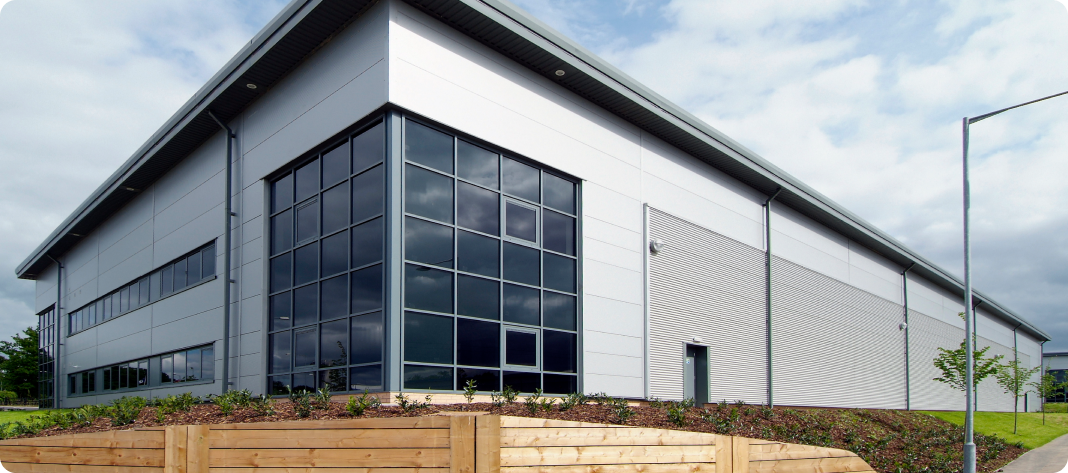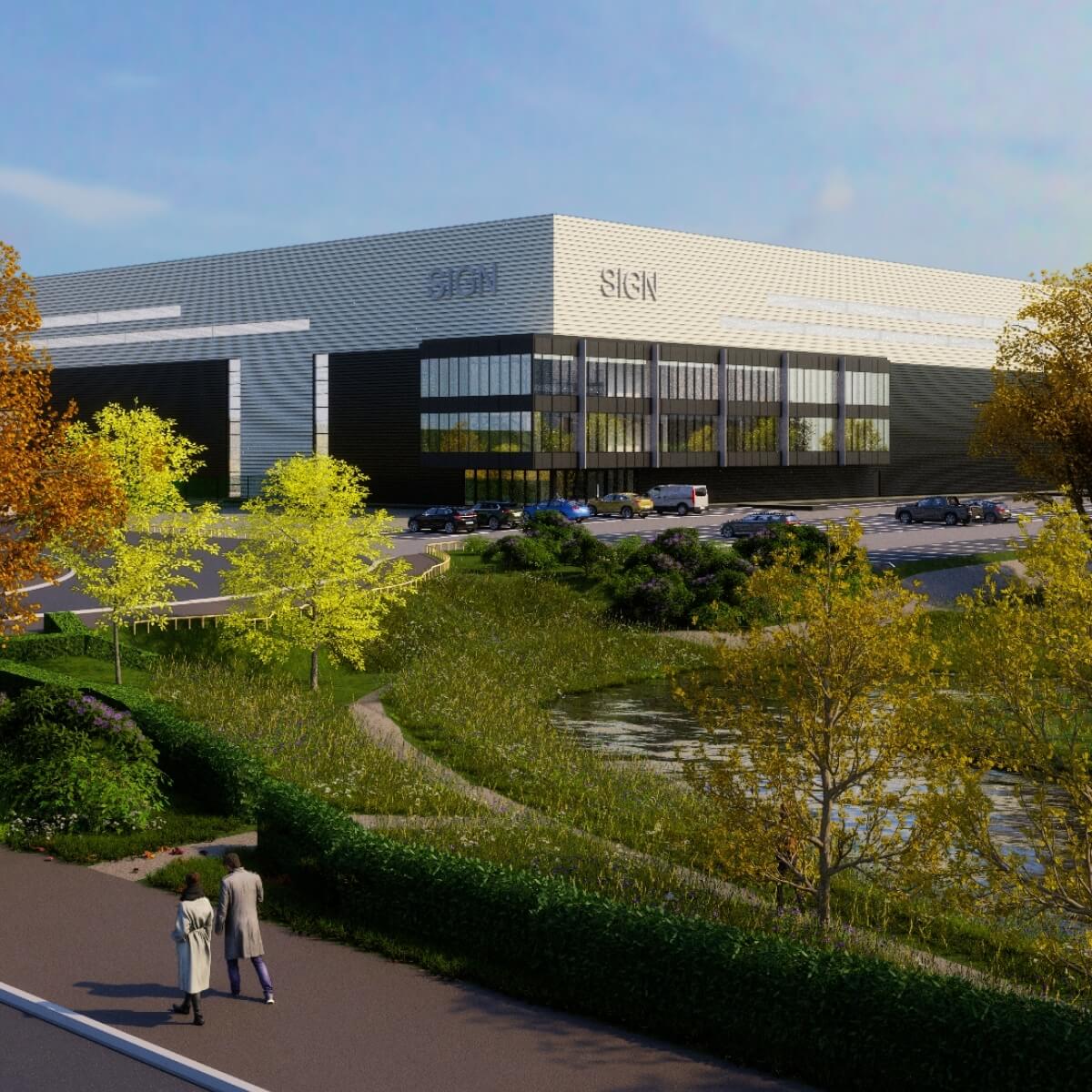Posted
August 13, 2025

Jayne Furnival
Executive Director – Property
jfurnival@langtreepp.co.uk EmailSmart building technology is now a key feature in high-performing commercial property. With growing expectations from investors, occupiers and regulators, these technologies have shifted up the priority list..
Used well, they can reduce operational costs, improve the occupier experience and strengthen long-term asset performance. But technology needs to support long-term commercial strategy, it shouldn’t be implemented simply because it is ‘new’. This article outlines the core benefits of smart building systems, the leading technologies in 2025, and what property owners should consider before making decisions on digital infrastructure.
What is smart building technology?
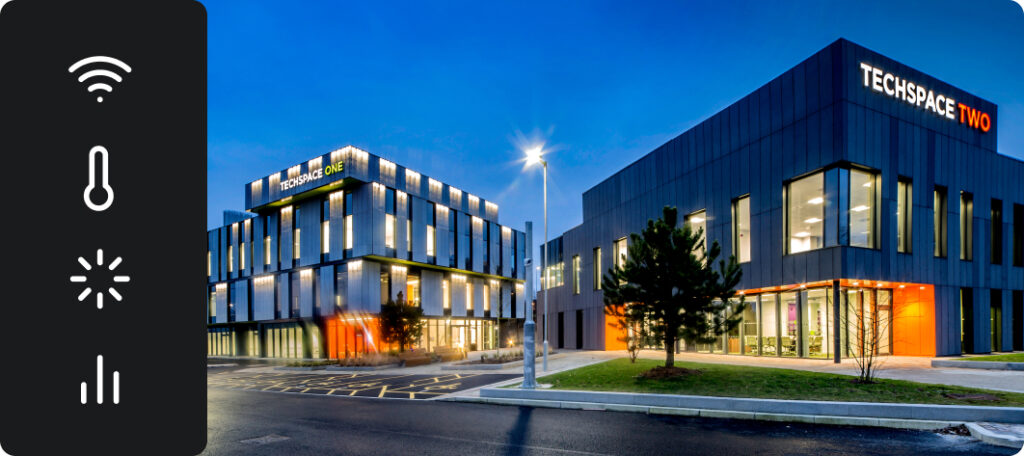
Smart building technology refers to systems that collect and act on data to improve commercial building performance. Common examples include occupancy sensors, automated lighting and Heating, Ventilation and Air Conditioning (HVAC) systems, energy usage dashboards, and predictive maintenance tools.
These systems often work together through a building management platform, enabling property teams to make data-led decisions that support comfort, efficiency and sustainability.
In many prime-grade buildings, smart systems are now considered standard features, especially where occupier wellbeing and Environmental, Social and Governance (ESG) reporting are priorities.
Why it matters: the commercial case for smart buildings

In many prime-grade buildings, smart systems are now considered standard features, especially where occupier wellbeing and Environmental, Social and Governance (ESG) reporting are priorities.
As the use of smart building technology in commercial property becomes more established, the commercial value is becoming clearer. From operational cost savings to occupier retention and compliance, technology is playing a greater role in helping buildings perform better for both owners and occupiers.
Lower operating costs
Operational efficiency is one of the most tangible benefits of smart building technology in commercial property. Real-time controls can lower energy usage by automating systems based on building use.
Predictive maintenance software helps prevent equipment failures by flagging anomalies early. This reduces unexpected costs and enables better lifecycle planning. These benefits align with UK energy efficiency programmes targeting commercial buildings designed to lower carbon emissions and operational costs.
Enhanced occupier experience
Comfortable, well-managed environments are more appealing to occupiers. Technologies that monitor air quality, temperature, and lighting can adjust conditions automatically, while data feedback tools help teams respond quickly to needs. In a market where flexible workspaces are common, the ability to provide a high-quality occupier experience is directly tied to both satisfaction and retention.
Asset Value and ESG Compliance
Buildings with high-performance credentials and strong ESG data tend to attract more interest from institutional investors. Recent regulatory updates emphasise ESG credentials, supported by independent RICS guidance on ESG and sustainability in commercial valuations. Smart technology supports sustainability tracking and regulatory compliance, helping assets stay aligned with future standards. This is especially relevant for investors looking to meet UK net zero targets.
Key technologies to watch in 2025 and beyond
As technology continues to evolve, certain innovations are becoming more widely adopted in the commercial sector. Below are some of the most impactful technologies shaping the future of commercial buildings and how they contribute to smarter, more sustainable asset management.
IoT sensors and real-time monitoring
IoT sensors can track a wide range of metrics, from occupancy and temperature to equipment performance. What makes them valuable is their ability to deliver real-time data to a central platform, enabling fast, data-driven decisions. For example, they can flag areas where lighting or HVAC is running unnecessarily or where footfall patterns could influence layout decisions.
According to the UK’s Digital Catapult, integrating IoT is a growing priority in smart infrastructure and urban development.
Industry discussions are increasingly focused on creating clearer benchmarks for smart building performance. A formalised approach could help define what ‘smart’ really means in commercial property, offering property and asset managers a more consistent framework to guide investment, demonstrate capability and support compliance.
AI-Powered building management systems
AI-based systems can analyse usage patterns, weather data and tenant behaviour to automate decisions across heating, cooling and ventilation. They support smarter energy use and reduce the manual input needed from facilities teams.
Digital twin technology
Digital twins are virtual models of physical buildings, updated in real-time with data from sensors and building systems. They enable predictive modelling, allowing property owners to simulate performance, maintenance needs or layout changes before implementing them.
Smart access and security
Modern access control systems offer touchless entry, visitor tracking, and tenant-specific permissions. These features improve both security and convenience, particularly in multi-tenant environments.
ESG-Focused Data Dashboards
Dashboards that combine energy use, emissions data and other ESG metrics are now essential for compliance and reporting. They allow property owners to demonstrate progress and align with investor expectations.
Want clarity on your building’s smart potential? Request a free property audit with Langtree to understand where technology can drive value, efficiency and compliance.
What property owners need to know before investing
Smart building systems should support a property’s strategy, not dictate it. It’s essential to consider how technology integrates with existing infrastructure and how it serves both occupier needs and investment goals.
Overspecifying tech can result in unused features and wasted cost. At Langtree, smart decisions are made with a view to long-term asset performance, particularly in joint ventures or complex ownership structures.
Langtree’s approach to strategic technology use

Langtree applies technology as part of a broader governance model. Smart systems are tools that support better decisions: how to invest, how to respond to occupiers, and how to manage long-term costs and risks.
Langtree’s financial modelling capabilities mean we can assess smart investments not just on operational impact, but how they affect long-term portfolio returns and compliance targets.
Because Langtree brings financial expertise together with asset management, technology is always aligned with the commercial goals of the investment. Data is used to plan, supporting strong tenant relationships and better ESG outcomes.
Making a smart start: your next step
Start by reviewing where you are: assess the age and functionality of your current Building Management System (BMS), how responsive your operations are to occupier needs, and what ESG expectations apply to your asset. Then consider how any technology investment fits into lifecycle planning. The best outcomes come when technology serves the building—not the other way around. Work with partners who understand both the financial and operational sides of property management.
Langtree supports clients with technology choices that align with their asset’s long-term plan. Find out how we integrate performance insight into every phase of property management.
Why long-term thinking matters more than the latest tech
Smart buildings are not defined by their systems alone, but by how those systems are used to support long-term outcomes. As expectations continue to grow, the best assets will be those that can adapt while maintaining a clear focus on commercial priorities.
PLANNING AHEAD
Ready to take the next step?
Request your free property audit and get expert insight on how smart technologies could enhance your building’s performance and long-term value.


